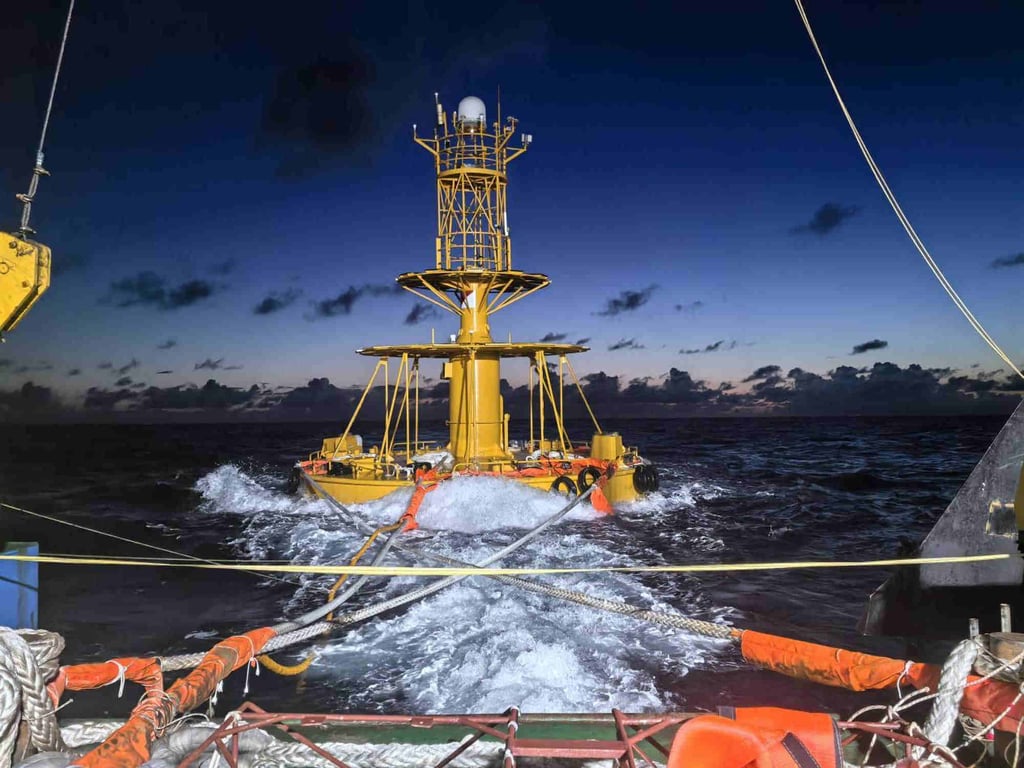Chinese scientists have deployed a buoy-based research platform in the South China Sea that can track both atmospheric and oceanic changes – even in typhoon-force winds.
Advertisement
Anchored 3,500 metres (11,400 feet) below the surface, the system is designed for synchronised, multilayered observations spanning 10km (6.2 miles) into the atmosphere and 1km into the ocean, according to the Institute of Oceanology at the Chinese Academy of Sciences in Qingdao, which led the project.
The buoy – powered by a hybrid energy system that combines solar, wind, thermal gradient and wave energy sources – can endure extreme marine conditions, including wind speeds over 60 metres per second and wave heights up to 20 metres, the institute said on its website.
“This buoy system features an innovative design with a highly stable surface and mooring structure tailored for deep-sea, high-wave conditions,” Liu Changhua, a senior engineer at the institute, told state broadcaster CCTV on Thursday.
“It’s equipped with multiple advanced instruments, including an oceanic quantum lidar and a microwave radiometer, for synchronous observations across the atmosphere, ocean surface and subsurface layers,” he said, adding that the platform had entered a one-year commissioning phase.

Scientists around the world have long used deep-sea buoys to study the ocean. Some, such as the US Ocean Observatories Initiative, are anchored in waters more than 5,000 metres deep and collect valuable data about the ocean and atmosphere.

